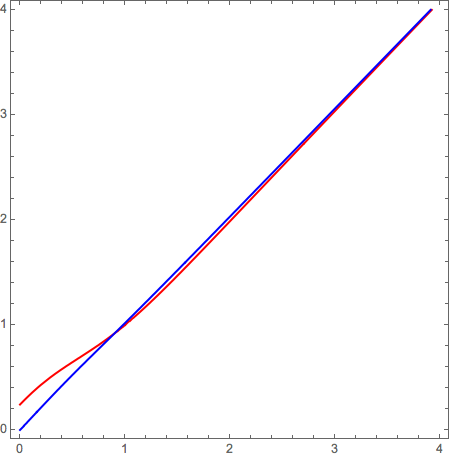I'm trying to solve the following system of equations and I can't seem to manipulate Mathematica to be get an answer. Any and all help would be appreciated.
Some notes: XNil and XNis should both be between 0 and 1 when solved. The value of 1700 in the equation should be able to range from 1356 to 1726.
HmCu = 13055;
TmCu = 1356;
HmNi = 17472;
TmNi = 1726;
GmCu[T_] = HmCu - T*(HmCu/TmCu)
GmNi[T_] = HmNi - T*(HmNi/TmNi)
R = 8.3144;
Lol = 11100;
Los = 10435;
In[30]= Rationalize[{GmCu[1700] + R*1700*Log[(1 - XNil)/(1 - XNis)] +
Lol*XNil^2 - Los*XNis^2 == 0 &&
GmNi[1700] + R*1700*Log[(XNil)/(XNis)] + Lol*(1 - XNil)^2 -
Los*(1 - XNis)^2 == 0}]
Out[30]= {-(1122730/339) + 11100 XNil^2 - 10435 XNis^2 +
353362/25 Log[(1 - XNil)/(1 - XNis)] == 0 &&
227136/863 + 11100 (1 - XNil)^2 - 10435 (1 - XNis)^2 +
20786/25 Log[XNil/XNis] == 0}
Solve[Out[30], {XNil, XNis}, Reals]
Solve::nsmet: This system cannot be solved with the methods available to Solve.
EDIT: I was able to find a solution using FindRoot instead of Solve. However, both solutions are above 1 which does not make sense within the context of the problem.



